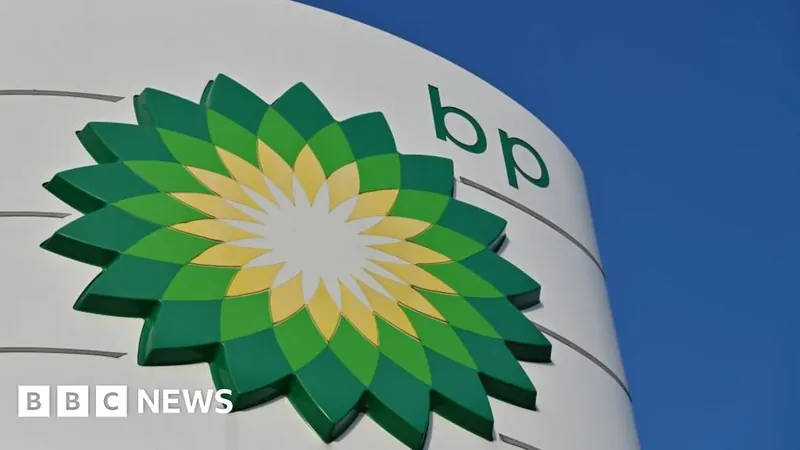
BP to Slash 4,700 Jobs: What It Means for the Future of Energy
2025-01-16
Author: Jia
BP's Workforce Reduction
In a bold move to streamline operations and cut costs, oil giant BP has announced plans to reduce its workforce by approximately 4,700 employees, which constitutes more than 5% of its global staff. This decision comes as part of a broader strategy aimed at achieving significant financial savings and enhancing the company's focus on high-value operations.
Details of the Job Cuts
BP, which currently employs around 90,000 people worldwide, confirmed the job cuts on Thursday. While specific details on how many roles will be affected in each country are yet to be disclosed, the UK workforce of about 16,000 will see minimal impact as roughly 6,000 employees working in petrol and service stations are not included in the layoffs. Furthermore, about 3,000 contractor positions are set to be eliminated this year as part of the company's restructuring efforts.
Leadership's Vision
Murray Auchincloss, BP's Chief Executive, has voiced his commitment to simplifying the business during his tenure. He has set an ambitious goal of reducing costs by $2 billion (£1.6 billion) by the end of 2026, with an immediate target of saving $500 million within the current year. In an internal communication, Auchincloss acknowledged the uncertainty the layoffs bring and reassured employees of the company's mission to evolve into a more focused and efficient organization.
Impact on Internal Structures
The looming cuts are primarily expected to impact office-based jobs rather than operational roles, which may provide some reassurance to frontline employees. Auchincloss revealed that around 2,600 contractors impacted by the cuts have already left the firm, indicating BP's proactive approach in managing its operational costs.
Strategic Review and Future Plans
This announcement follows a comprehensive review of BP's various divisions and is part of a multi-year strategy aimed at achieving significant overhead savings across the company. There are indications that more job reductions may occur as BP accelerates its digital transformation, integrating more advanced technologies, including artificial intelligence, into its engineering and marketing practices.
Criticism of the Strategy
However, BP's recent strategy has drawn criticism, particularly for its decision to curb ambitions for reducing oil and gas production by 2030. Initially pledging to lower emissions by 35-40% by the end of the decade, BP has since scaled back its target to a 20-30% reduction while continuing investments in fossil fuel projects. Auchincloss's cost-cutting measures are seen as a strategic effort to revive the company's flagging share price, which has dropped approximately 20% over the past year.
Leadership Challenges
His leadership comes in the wake of the abrupt departure of his predecessor, Bernard Looney, amid a review of his personal conduct with colleagues, adding an extra layer of scrutiny to BP's corporate governance during this tumultuous transition.
 Brasil (PT)
Brasil (PT)
 Canada (EN)
Canada (EN)
 Chile (ES)
Chile (ES)
 Česko (CS)
Česko (CS)
 대한민국 (KO)
대한민국 (KO)
 España (ES)
España (ES)
 France (FR)
France (FR)
 Hong Kong (EN)
Hong Kong (EN)
 Italia (IT)
Italia (IT)
 日本 (JA)
日本 (JA)
 Magyarország (HU)
Magyarország (HU)
 Norge (NO)
Norge (NO)
 Polska (PL)
Polska (PL)
 Schweiz (DE)
Schweiz (DE)
 Singapore (EN)
Singapore (EN)
 Sverige (SV)
Sverige (SV)
 Suomi (FI)
Suomi (FI)
 Türkiye (TR)
Türkiye (TR)
 الإمارات العربية المتحدة (AR)
الإمارات العربية المتحدة (AR)